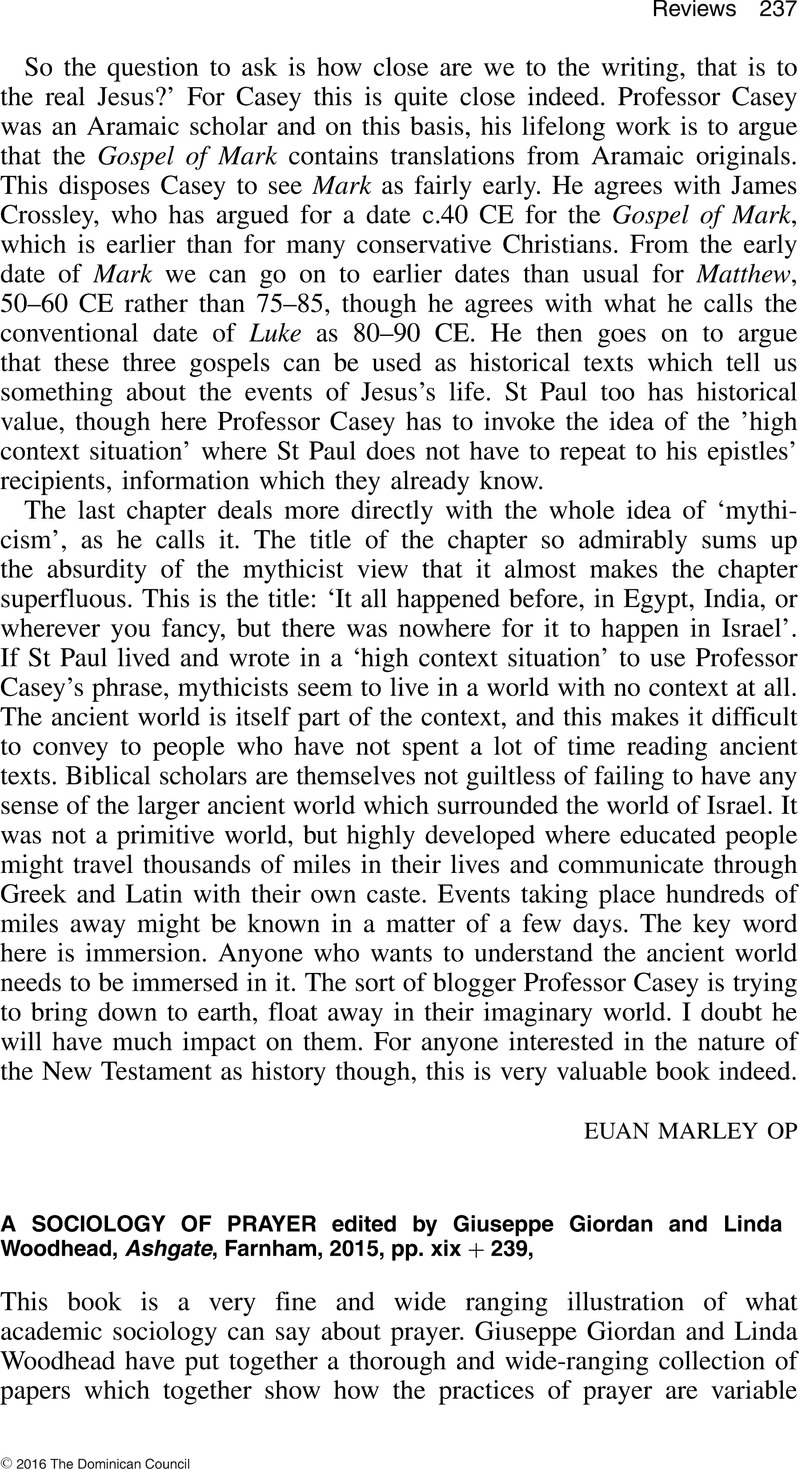No CrossRef data available.
Article contents
A Sociology of Prayer edited by Giuseppe Giordan and Linda Woodhead, Ashgate, Farnham, 2015, pp. xix + 239.
Review products
A Sociology of Prayer edited by Giuseppe Giordan and Linda Woodhead, Ashgate, Farnham, 2015, pp. xix + 239.
Published online by Cambridge University Press: 01 January 2024
Abstract
An abstract is not available for this content so a preview has been provided. Please use the Get access link above for information on how to access this content.

Information
- Type
- Reviews
- Information
- Copyright
- Copyright © 2016 The Dominican Council. Published by John Wiley & Sons Ltd

